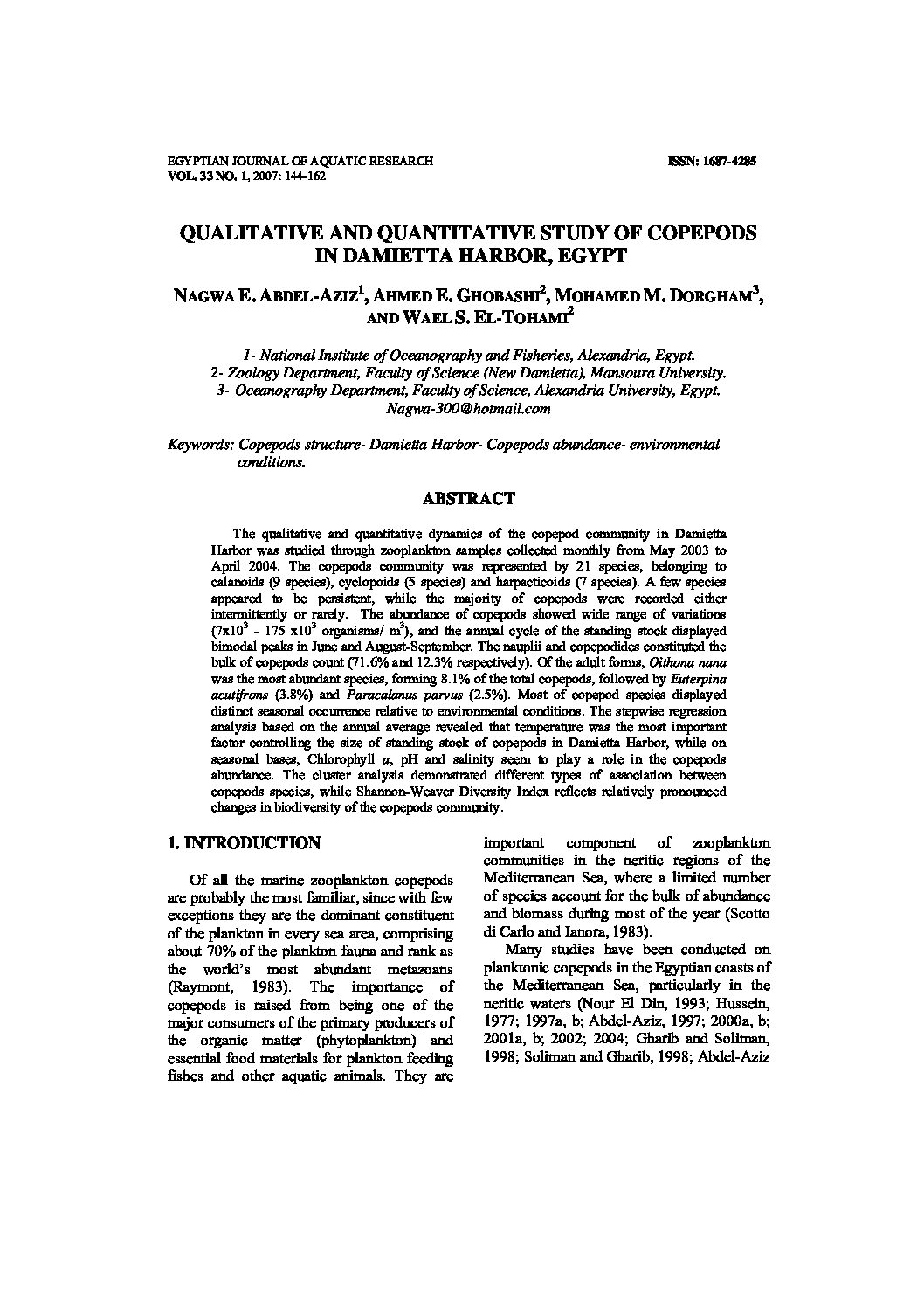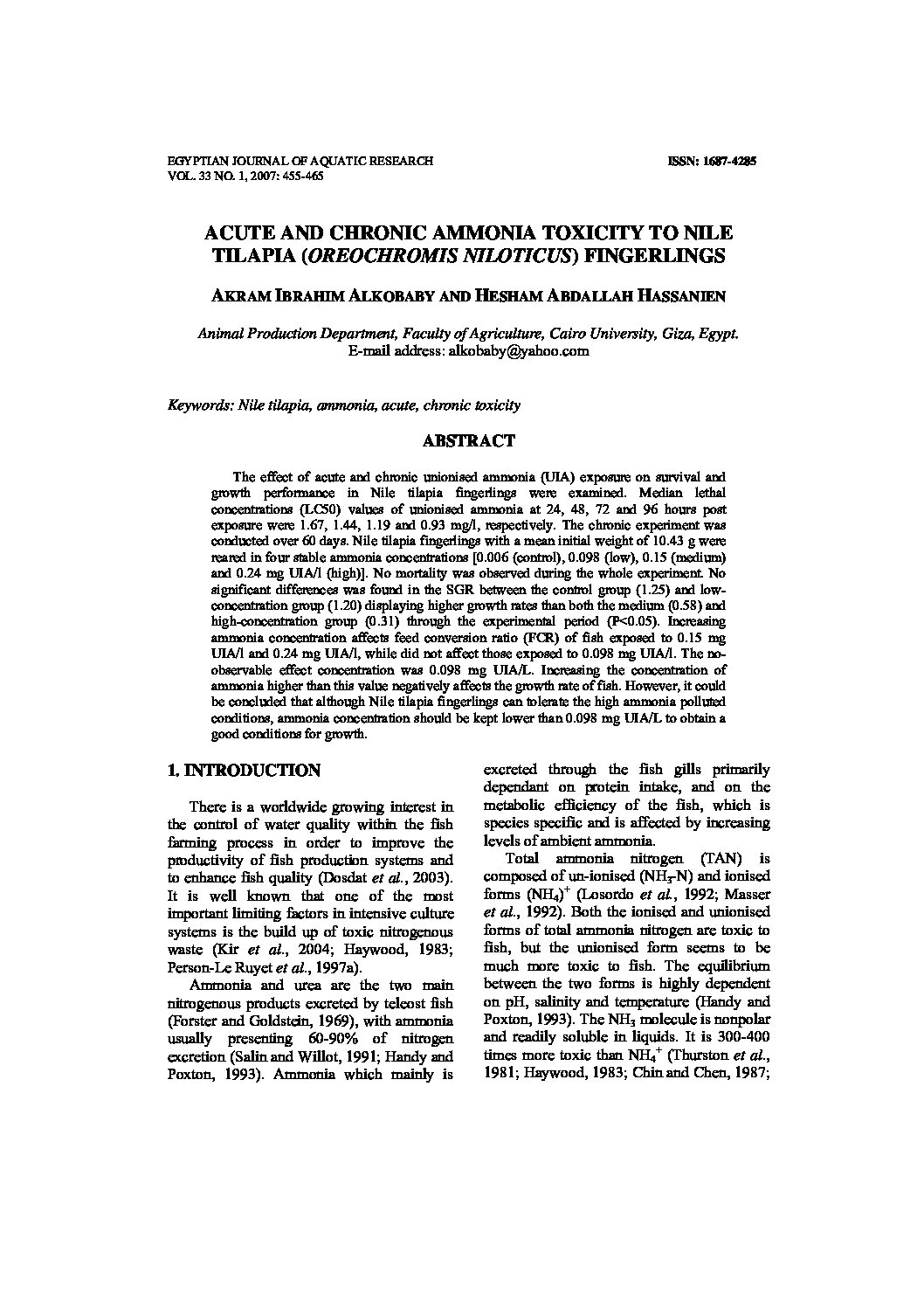Categories
vol-33QUALITATIVE AND QUANTITATIVE STUDY OF COPEPODS
IN DAMIETTA HARBOR, EGYPT
NAGWA E. ABDEL-AZIZ1
, AHMED E. GHOBASHI2
, MOHAMED M. DORGHAM3
,
AND WAEL S. EL-TOHAMI2
1- National Institute of Oceanography and Fisheries, Alexandria, Egypt.
2- Zoology Department, Faculty of Science (New Damietta), Mansoura University.
3- Oceanography Department, Faculty of Science, Alexandria University, Egypt.
[email protected]
Keywords: Copepods structure- Damietta Harbor- Copepods abundance- environmental
conditions.
ABSTRACT
The qualitative and quantitative dynamics of the copepod community in Damietta
Harbor was studied through zooplankton samples collected monthly from May 2003 to
April 2004. The copepods community was represented by 21 species, belonging to
calanoids (9 species), cyclopoids (5 species) and harpacticoids (7 species). A few species
appeared to be persistent, while the majority of copepods were recorded either
intermittently or rarely. The abundance of copepods showed wide range of variations
(7×103
– 175 x103
organisms/ m3
), and the annual cycle of the standing stock displayed
bimodal peaks in June and August-September. The nauplii and copepodides constituted the
bulk of copepods count (71.6% and 12.3% respectively). Of the adult forms, Oithona nana
was the most abundant species, forming 8.1% of the total copepods, followed by Euterpina
acutifrons (3.8%) and Paracalanus parvus (2.5%). Most of copepod species displayed
distinct seasonal occurrence relative to environmental conditions. The stepwise regression
analysis based on the annual average revealed that temperature was the most important
factor controlling the size of standing stock of copepods in Damietta Harbor, while on
seasonal bases, Chlorophyll a, pH and salinity seem to play a role in the copepods
abundance. The cluster analysis demonstrated different types of association between
copepods species, while Shannon-Weaver Diversity Index reflects relatively pronounced
changes in biodiversity of the copepods community.







